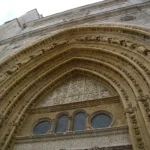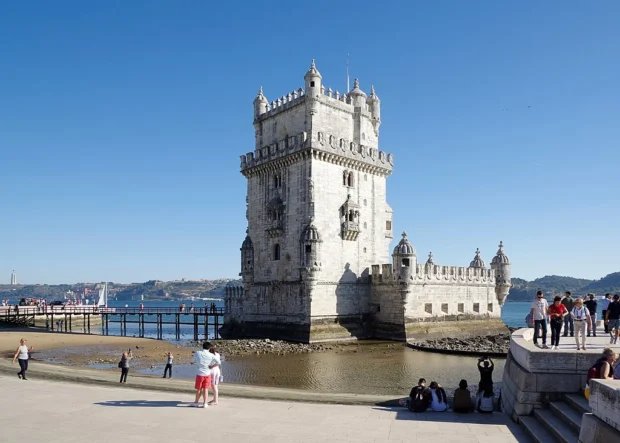Lisbon, the coastal capital of Portugal, gracefully balances centuries of history with modern vibrancy. Nestled on the bank of the Tagus River, Belém Tower stands as a remarkable testament to Portugal’s Age of Discoveries. This iconic fortification, also known as Torre de Belém, not only shields the entrance of the river but also encapsulates the artistry and maritime ambition that shaped an entire era. Visiting Belém Tower offers more than sightseeing; it invites reflection on craftsmanship, defense innovation, and cultural heritage intertwined with Lisbon’s waterfront charm.
Table of Contents
Approaching Belém Tower: Quiet Paths Beside the Tagus
The tower lies about 6 kilometers west of Lisbon’s city center, easily reachable by multiple means. Taking the iconic tram 15 from Praça do Comércio leads directly to the Belém district, where a short stroll along the riverside brings you to the tower’s gates. For those arriving by train, the Belém railway station is a comfortable 10-minute walk. Visitors flying into Humberto Delgado Airport find taxis or ride shares most practical; the drive generally takes 20 to 30 minutes depending on traffic.
On foot or by bicycle, the riverfront promenades invite leisurely exploration, allowing one to appreciate the transition from urban Lisbon to the historic maritime quarters. Along the way, cafes and pastelarias offer local specialties such as the famous pastéis de nata, providing a sweet pause with views of the water.
Nearby Stays and Local Flavors
Although the area surrounding Belém Tower is predominantly residential and cultural, accommodation ranges from modest guesthouses to stylish apartments, often featuring views of the river or leafy streets. For dining, the district boasts seafood restaurants specializing in fresh cod and grilled fish dishes-quintessential flavors of the Portuguese coast. Sampling traditional petiscos, Portugal’s approach to small plates, perfectly complements the leisurely pace Belém encourages.
Belém Tower’s Architectural Story: An Ode to Manueline Craftsmanship
Constructed between 1514 and 1520 under the reign of King Manuel I, Belém Tower exhibits the characteristic Manueline style-a uniquely Portuguese architectural expression blending Gothic motifs with Renaissance and Moorish influences. This style celebrates Portugal’s maritime achievements, incorporating elements such as intricate stone ropes, crosses of the Order of Christ, and maritime symbols including armillary spheres and twisted columns.
The fortification originally functioned as a defensive bastion guarding the entrance to Lisbon’s harbor, a critical point for controlling naval access during the height of Portugal’s exploratory missions. Its position on a small island in the Tagus River was strategic yet architecturally daring-balancing functionality with ornamental finesse. The richly adorned bartizan turrets and crenellated walls reveal a beautiful tension between military purpose and sculptural elegance.
Symbolism and Strategic Genius
Belém Tower was not merely a fortress; it represented a symbolic gateway to the New World and the expanding horizons of Portugal. The tower’s design echoes the cultural pride and technological optimism of the early 16th century. Visitors today often overlook the site’s subtle defensive innovations-such as gun embrasures angled for optimal coverage and thick walls engineered to withstand cannon fire-in favor of admiring its ornate stonework. Yet, these features together highlight the duality of aesthetic grace and martial readiness that defines the structure.
Visiting Belém Tower: Practical Tips for Every Season
To experience Belém Tower at its best, plan visits during weekdays in the early morning or late afternoon. These periods tend to see fewer tourists, allowing for an intimate appreciation of details often lost in crowds. Spring and early autumn offer pleasant weather, with gentle sunlight that enhances the texture of the limestone façade. Summer, while lively, brings larger visitor groups and occasional heat, which may detract from contemplative observation.
Access to the tower’s interior requires walking up narrow spiral staircases, sometimes steep and uneven due to centuries-old construction. Wearing comfortable, stable footwear is advisable. Photography enthusiasts will find ample opportunity to capture the interplay of shadow and stone carvings, especially in the late afternoon light when the Tagus sparkles.
Entry and Reservations
Since the tower is a protected monument managed by national heritage authorities, admission fees apply, helping preserve its integrity. Entry tickets can be purchased on-site or in advance through the official tourist website, which also details opening hours and any temporary closures. For groups or those seeking guided understanding, booking a tour in advance is recommended, especially in peak seasons. These tours provide enriched context, unveiling lesser-known facts about the tower’s role in Lisbon’s defense system and its symbolic significance amid Portugal’s imperial aspirations.
To secure up-to-date information and reservation options, visit the official Belém Tower website.
Nearby Historical Treasures: Complement Your Visit
Belém Tower sits within an enclave of historical marvels worth exploring. Just a short walk away lies the Jerónimos Monastery, another masterpiece of Manueline design, where Vasco da Gama’s tomb anchors the memory of Portugal’s explorers. Nearby, the Monument to the Discoveries emerges from the riverbank, shaped like a ship’s prow and celebrating the nation’s navigators.
After visiting Belém Tower, appreciate more of Lisbon’s charm by enjoying the city’s warm colors and tastes nearby Lisbon’s Warm Colors and Tastes on Every Corner.
For those curious about maritime innovation beyond stone and mortar, the Maritime Museum offers collections of ship models, navigational instruments, and maps tracing Portugal’s global voyages. This constellation of sites allows visitors to experience a cohesive narrative of Lisbon’s seafaring heritage, enriching the solitary beauty of Belém Tower with a broader cultural frame.
Unveiling the Overlooked: Stories and Secrets of Belém Tower
Beyond its publicized role, Belém Tower holds subtle stories often missed by hurried tourists. For instance, the small chapel within its walls, dedicated to Saint Vincent, the patron saint of Lisbon, embodies the spiritual dimension of a military site. Its finely carved altarpiece and delicate azulejos tiles offer a moment of serene reflection amidst the fortification.
Moreover, the tower’s interior showcases wide embrasures overlooking the river, designed not just for artillery but also as vantage points for observing passing ships-an early warning system essential for the city’s survival. Legend whispers about secret tunnels and hidden compartments, although these remain largely speculative, adding an air of mystery and fascination for architectural detectives at heart.
Final Reflections: Belém Tower as a Testament to Design and Ambition
Belém Tower stands not simply as an ancient structure, but as a dialogue between form and function, history and symbolism. It invites visitors to admire human creativity expressed through carved stones that have weathered centuries. This monument captures a moment when Portugal’s gaze turned outward, casting lines across oceans, and shaping global encounters.
For a fuller view of Belém’s rich history, take a moment to explore the majestic Jerónimos Monastery nearby, where maritime heritage and artistic grandeur continue the story begun at Belém Tower.
Visiting Belém Tower offers a layered experience-one of architectural splendor, historical resonance, and cultural pride. Whether you wander the riverside terraces, study the delicate ornamentation, or contemplate the waves lapping at its base, the tower quietly narrates a story of exploration and artistry that continues to inspire those who pause to listen.

- Lisbon Torre de Belém BW 2018-10-03 16-38-01 by Berthold Werner on Wikimedia Commons – cc by-sa 4.0
